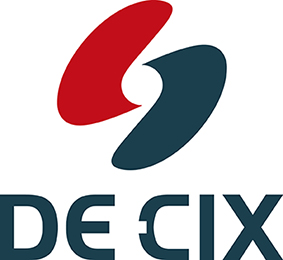Interconnecting Regional Ecosystems: A Recipe for Economic Growth
Ivo Ivanov from DE-CIX explains how localizing interconnection infrastructure contributes to a positive development of regional digital economies.

© NicoElNino | istockphoto.com
In today's digital business world, interconnection requirements are increasing in parallel with the growth in digital and cloud-based services, and this is especially the case for business processes. According to a study conducted by the OECD, the global Covid-19 pandemic has accelerated the need for stable, fast, and efficient Internet for millions of employees and employers who already take advantage of the option of working from home, and are more likely to do so in the future. These workers depend on video calls, stable VPN connections, and fast access to work-related material. Because of the importance of such digital applications for businesses and people, every millisecond counts. All digital applications used in offices, the manufacturing sector, and all other industries today are highly latency sensitive, as they need fast response times to guarantee a good user experience. Therefore, the quality of connectivity is a decisive competitive factor for digital economies.
So far, the best connectivity has only really been available to users in major cities and digital hubs, with regions off the beaten track of the digital superhighways lagging behind. Digital companies and digital service providers tend to gravitate towards areas with an existing digital ecosystem, where they can meet other players and exchange data traffic directly and at high speed. This needs to be replicated outside of the big digital hubs, so that people and businesses everywhere can be served with high-quality digital applications and services.
To ensure that regional connectivity is as good as connectivity in major hubs, data needs to travel efficiently and avoid long distances between networks. This is where latency, the time it takes for data to travel to its destination for processing and back again, plays a major role. Establishing an Internet Exchange (IX) to interconnect networks and businesses locally in tier 2 and 3 cities means that data is not forced to travel further to be exchanged in larger digital hubs. This will enable smaller cities and their digital infrastructure providers (telecom operators, Internet service providers, and data center operators) to offer high-performance, low-latency connectivity, and businesses in regional locations to maximize their potential for success. Ultimately, this will enable the growth of regional and local digital ecosystems that can not only serve the need of businesses and citizens, but can help cities to flourish in the digital economy.
Local Interconnection improves connectivity and the performance of digital applications
In our digital age, most companies need high-performance and secure interconnection to do business. Local IXs reduce latency between connected enterprises, enhance the speed of connectivity, increase resilience, and lead to a more stable network for applications such as cloud computing, VoIP connections, video conferencing, and online collaboration. The applications on which our digital future will be based will require extremely low latency. Smart IoT and critical applications that require real-time responses, such as autonomous driving, require latencies in the 1-3 millisecond range, and will therefore need to be performed within a range of 50-80 km from the user. This means that connectivity between the data centers where this data is processed and stored needs the shortest path to where the data is consumed.
While data centers act as the core of regional networking, good broadband infrastructure is the conduit. Regional and local data centers can become part of, and provide access to, a distributed Internet Exchange or interconnection platform, and this in turn can offer various interconnection services for Internet service providers (ISPs) and enterprise networks. The enablement of participants to interconnect with each other at the lowest possible latency is one of the foundations of a healthy digital ecosystem. Establishing an Internet Exchange in the local environment will therefore offer tremendous growth opportunities for smaller cities and their economies.
Connectivity to clouds and content improves growth potential
According to the World Bank, more than 80% of global GDP is now generated in cities. Encouraging migration to your region through making it attractive to citizens is decisive for building the local economy. Current trends, however, favor working from home. In a recent survey conducted by Paulsen and Audience Audit, many Americans said they would consider moving to a rural or suburban home. Despite this, for 67% of respondents, one factor would be the deciding one: Internet access. Investments in this area are not only profitable, but also make a positive contribution to regional economic development and the remote workforce who is dependent on this.
More specifically, through gaining access to a thriving digital ecosystem, local businesses will be able to accelerate and grow their business potential through direct connectivity to clouds, content and enterprise-grade applications such as Microsoft 365, and skilled workers are more likely to migrate to cities with good connectivity. How can this be achieved? A regional IX not only facilitates local data exchange, but is ideally also connected to larger IXs in major (inter)national hubs, where many of the global players can be found, such as AWS, Microsoft, and Google. Shorter, direct pathways to clouds and digital resources increase security and performance. This results in an increase in the overall quality of the Internet, making a region more attractive for people escaping major hubs, while at the same time attracting new business investments.
Cities and regions with a highly developed digital economy are more competitive
The digital economy has become the backbone of economic growth for the future, and no sector can afford not to be on the path to digitalization. This is why the development of more localized digital infrastructure is crucial to strengthening the local economy and thus creating a better quality of life for citizens. According to a study by the Leibniz Centre for European Economic Research (ZEW), cities with a highly developed digital economy are more competitive and grow faster than their more analog peers. Having an IX in a city results in better and lower-cost connectivity, leads to better opportunities for businesses to interact and create new services, as well as to the establishment of new startups in the digital economy. In the long run, this will also result in a flourishing industry of digital services and content in the local economy.
The Leibnitz researchers were also able to prove that not only the region in question benefits from a good broadband infrastructure, but also neighboring, less well-connected regions. Therefore, as each region individually fortifies its own connectivity and digital infrastructure, the flow-on effects will be felt more broadly. This is the proof that, by working in concert, cities and regions can create something greater than simply working alone. The establishment of regional IX infrastructure can thus support national rollout strategies, helping bring more and more of a country’s population online with high-performance connectivity, able to participate in digital economies across city, state, and national borders.
Regional Internet Exchanges create business opportunities for network operators and data centers
A regional Internet Exchange is not only a defining competitive advantage for the city in question, but also a major business opportunity for the infrastructure players housing it. Therefore, ISPs, city carriers, and regional data center operators can benefit from being involved in establishing and/or operating an IX. If they do not have the in-house interconnection know-how to do this themselves, they can develop their interconnection business in partnership with an existing expert, such as DE-CIX. The DE-CIX as a Service (DaaS) program, for example, offers professionally managed IXs, built to the partners’ desired dimensions. The IX can be shipped to the doorstep as “DE-CIX in a Box,” based on DE-CIX’s award-winning Apollon technology and offering DE-CIX’s multi-service interconnection platform.
A regional Internet Exchange offers various interconnection services for local carriers or data center operators – which they can sell on to their local enterprise customers. The digital ecosystem developing around the IX will also attract more businesses to the region, which become potential customers for the infrastructure providers. These can offer modern interconnection services such as direct connection to global hyperscale clouds as part of their portfolio of services. The result: A well-functioning distributed ecosystem with great economic potential as part of the local digital economy.
Setting the right priorities now will allow future potential to unfold
Growing data traffic on the Internet, increasingly latency-sensitive applications, and rising security requirements call for stronger regional networking and new Internet Exchanges. Latency can be reduced, and data transfer accelerated. Economic areas outside major metropolitan regions can generate growth in their local economy and build the attractiveness and competitiveness of their location.
A great example for the benefits of a strong digital ecosystem which has developed around an IX is Frankfurt, a magnet for the digital economy. The city is a major hub not only for the finance industry, but also for the world’s biggest tech companies, such as Google, who has chosen to invest in Frankfurt as a location due to its proximity to one of the world largest Internet Exchanges – DE-CIX Frankfurt. A similar development of this kind on a smaller scale in secondary markets is what smaller cities and regions should aim for. Stronger digital infrastructure and a growing digital ecosystem will help the local economy grow and also attract a skilled workforce. The development of local digital infrastructure through an IX should also be a top priority for local infrastructure providers, such as city carriers and data center operators, who can reap the rewards of this business opportunity. Not only is investment in digital and interconnection infrastructure necessary to strengthen and future-proof regional economies, but it is also highly profitable.
Ivo A. Ivanov is Chief Executive Officer of DE-CIX International, with more than 10 years’ experience in the regulatory, legal and commercial Internet environment. Ivo joined DE-CIX in January 2007. In recent years, he has been deeply involved in the establishment of DE-CIX sites in Istanbul, Palermo, Madrid, Marseille, New York, Dallas, Dubai (UAE-IX powered by DE-CIX), as well as Mumbai (Mumbai IX powered by DE-CIX), and several DE-CIX consultancy projects in Africa, Asia, and Europe.
Ranked as one of the top 100 most influential professionals of the Telecom industry (Capacity Magazine’s Power 100 listing, 2021), Ivo is regularly invited to share his vision and thought leadership in various industry-leading conferences around the globe.
Ivo has an educational background focused on law and business. Fluent in German, English, Russian, and Bulgarian, he graduated from a German business school in 1995 and holds two law degrees, from the Universities of Sofia (Bulgaria) and Bonn (Germany). After graduation, he worked as a lawyer, with a focus on e-commerce law, IP law, telecommunications law, and data protection law.





